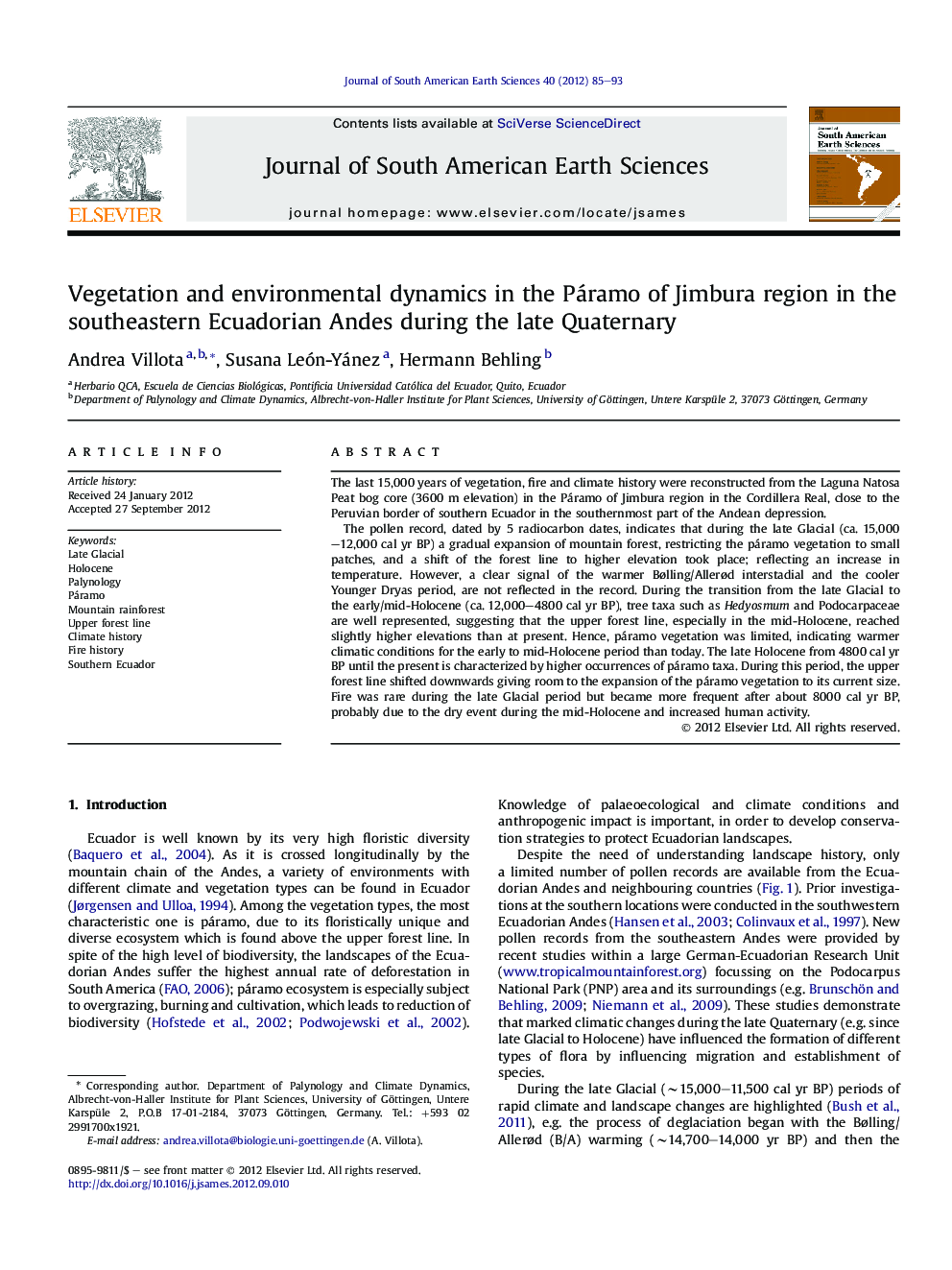| کد مقاله | کد نشریه | سال انتشار | مقاله انگلیسی | نسخه تمام متن |
|---|---|---|---|---|
| 4682397 | 1635169 | 2012 | 9 صفحه PDF | دانلود رایگان |

The last 15,000 years of vegetation, fire and climate history were reconstructed from the Laguna Natosa Peat bog core (3600 m elevation) in the Páramo of Jimbura region in the Cordillera Real, close to the Peruvian border of southern Ecuador in the southernmost part of the Andean depression.The pollen record, dated by 5 radiocarbon dates, indicates that during the late Glacial (ca. 15,000–12,000 cal yr BP) a gradual expansion of mountain forest, restricting the páramo vegetation to small patches, and a shift of the forest line to higher elevation took place; reflecting an increase in temperature. However, a clear signal of the warmer Bølling/Allerød interstadial and the cooler Younger Dryas period, are not reflected in the record. During the transition from the late Glacial to the early/mid-Holocene (ca. 12,000–4800 cal yr BP), tree taxa such as Hedyosmum and Podocarpaceae are well represented, suggesting that the upper forest line, especially in the mid-Holocene, reached slightly higher elevations than at present. Hence, páramo vegetation was limited, indicating warmer climatic conditions for the early to mid-Holocene period than today. The late Holocene from 4800 cal yr BP until the present is characterized by higher occurrences of páramo taxa. During this period, the upper forest line shifted downwards giving room to the expansion of the páramo vegetation to its current size. Fire was rare during the late Glacial period but became more frequent after about 8000 cal yr BP, probably due to the dry event during the mid-Holocene and increased human activity.
► The last 15,000 yr BP of vegetation, fire and climate were reconstructed.
► During the late Pleistocene a gradual expansion of mountain forest took place.
► The UFL reached higher elevation in the transition from Pleistocene to the Holocene.
► In the late Holocene, the UFL shifted downwards and páramo taxa expanded.
► Fire was rare in the late Glacial but became more frequent after ∼8000 cal yr BP.
Journal: Journal of South American Earth Sciences - Volume 40, December 2012, Pages 85–93